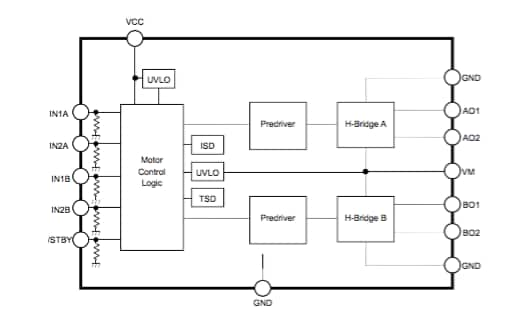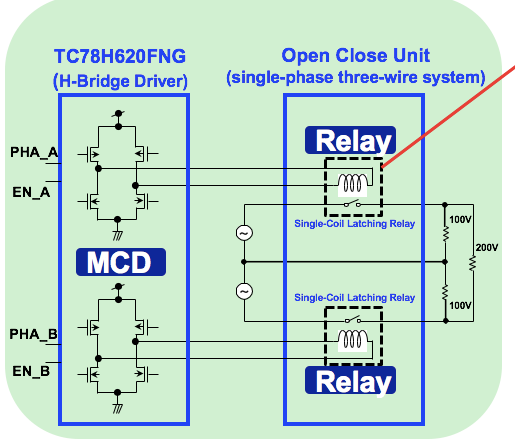- General Top
- SEMICONDUCTOR
- STORAGE
- COMPANY
-
My ToshibaSemicon
- Semiconductor Top
-
ApplicationsAutomotive
Body Electronics
xEV
In-Vehicle Infotainment
Advanced Driver-Assistance Systems (ADAS)
Chassis
IndustrialInfrastructure
BEMS/HEMS
Factory Automation
Commercial Equipment
Consumer/PersonalIoT Equipment
Healthcare
Wearable Device
Mobile
Computer Peripherals
-
ProductsAutomotive Devices
Discrete Semiconductor
Diodes
Transistors
Logic ICs
Analog Devices
Digital Devices
Wireless Devices
※
: Products list (parametric search)
Power SemiconductorsSiC Power Devices
※
: Products list (parametric search)
Isolators/Solid State RelaysPhotocouplers
Digital Isolators
Solid State Relays
Fiber Optic Transmitting Modules
※
: Products list (parametric search)
MOSFETsIGBTs/IEGTsBipolar Transistors※
: Products list (parametric search)
Diodes※
: Products list (parametric search)
MicrocontrollersMotor Driver ICsIntelligent Power ICs※
: Products list (parametric search)
Power Management ICsLinear ICs※
: Products list (parametric search)
General Purpose Logic ICsLinear Image SensorsOther Product ICsOther Product ICs
※
: Products list (parametric search)
-
Design & Development
Design & Development
Innovation Centre
At the Toshiba Innovation Centre we constantly strive to inspire you with our technologies and solutions. Discover how to place us at the heart of your innovations.
-
Knowledge
Knowledge
Highlighted Topics
Further Materials
Other
- Where To Buy
- Part Number & Keyword Search
- Cross Reference Search
- Parametric Search
- Stock Check & Purchase
This webpage doesn't work with Internet Explorer. Please use the latest version of Google Chrome, Microsoft Edge, Mozilla Firefox or Safari.
require 3 characters or more. Search for multiple part numbers fromhere.
The information presented in this cross reference is based on TOSHIBA's selection criteria and should be treated as a suggestion only. Please carefully review the latest versions of all relevant information on the TOSHIBA products, including without limitation data sheets and validate all operating parameters of the TOSHIBA products to ensure that the suggested TOSHIBA products are truly compatible with your design and application.Please note that this cross reference is based on TOSHIBA's estimate of compatibility with other manufacturers' products, based on other manufacturers' published data, at the time the data was collected.TOSHIBA is not responsible for any incorrect or incomplete information. Information is subject to change at any time without notice.
require 3 characters or more.
How to control latching relays in smart power meters - an alternative use for brush motor driver ICs

Magnetic latching relays are key components in today’s smart power meters, where they are used to facilitate the remote disconnection and reconnection of power to the consumer premises. A key benefit of such relays is their low power consumption as they maintain last contact position after the control power has been removed. Turning the relay on and off simply requires a momentary application of a trigger pulse current to the relay coil. A pulse in one direction will set the relay to the first position, and a pulse in the other direction to the second position.

In general, drive circuits for latching relays are more complex than those for other relays. Typically, a half-bridge circuit is needed if dual supply voltages are available, and a full-bridge will be required if just one supply is available. Discrete circuits may be developed for the control of latching relays, but it is increasingly common to employ dedicated driver ICs. Whichever approach an engineer chooses, key design criteria are likely to include minimum circuit size, high-efficiency operation and the implementation of appropriate protection functionality.
Because the requirements for controlling latching relays – bridge circuitry, low-power operation, the need for protection, compact design – are similar to the drive requirements of brushed motors, it is also possible to deploy dedicated motor control driver (MCD) ICs in latching relay control circuitry. What’s more, because many smart meters have two latching relays, and because some motor drive ICs combine dual control with high levels of integrated protection functionality, this approach can help to simplify circuit design and reduce component count.
Take, for example, Toshiba’s TC78H610FNG. Supplied in a compact SSOP 16 package measuring just 5.0mm x 4.4mm, this direct driver IC incorporates two MOSFET-based H-bridges. As a result, it is ideally suited to driving the two single-coil latching relays found in modern smart meters. Electric current direction is easily controlled by the application of appropriate input signals to the IC.

Furthermore, because the IC integrates high levels of protection – it has built-in circuitry for over current detection (ISD), thermal shutdown (TSD) and under voltage lockout (UVLO) - the need for additional protection circuitry and components is drastically reduced.
The diagram below illustrates how this MCD can be incorporated into a smart meter’s latching relay circuit, with signals PHA_A and PHA_B being used to control the current to the relays.
To find out more about Toshiba’s comprehensive family of motor control driver ICs, click here.

